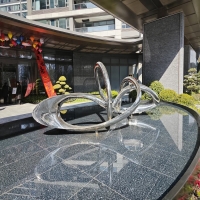Welcome to the website for landscape facilities products and knowledge.
How does the table’s surface affect the usability of jewelry-making or small-part assembly?
The surface you choose for jewelry-making or small-part assembly isn't just a passive platform—it actively shapes your creative process and final results. Different table materials and characteristics significantly impact everything from precision to productivity, making your work surface a crucial tool rather than merely a place to work.
Hard, non-porous surfaces like glass, polished stone, or sealed wood provide the firm foundation necessary for delicate operations. When setting tiny gemstones or assembling miniature components, any give in your surface can compromise accuracy. These smooth surfaces allow tools to move predictably and prevent delicate items from sinking into uneven textures. The satisfying "click" of a metal finding against glass confirms you have the stable environment precision work demands.
Contrast this with softer surfaces like unfinished wood or fabric-covered tables. While seemingly comfortable, these materials create constant challenges. Small beads roll into microscopic grooves, screwdrivers catch on rough patches, and dropped components disappear into surface imperfections. The frustration of searching for a 2mm jump ring demonstrates how surface choice directly affects workflow efficiency.
Color and reflectivity play equally important roles. Dark surfaces make silver components and white crystals highly visible, while light surfaces enhance the visibility of dark beads and metal findings. Matte finishes reduce eye strain by minimizing glare from overhead lighting, whereas slightly reflective surfaces can help identify shiny flaws in metal components. The strategic use of contrasting colored mats on a neutral table creates visual zones for different assembly stages.
Practical considerations extend beyond the immediate work area. Static-prone surfaces like some plastics can send tiny components flying, while magnetic surfaces can securely hold steel tools and components in organized arrays. Heat resistance becomes crucial when working with soldering tools or UV resins that require curing stations. The incorporation of built-in organizers, tool holders, and non-slip edges transforms a simple table into a dedicated creative station.
Beyond material properties, organization systems integrated into your surface dramatically improve efficiency. Silicone mats with measurement guides, magnetic strips for needle files, and small containers embedded into the work area keep essential items within reach but out of the way. This organization prevents the all-too-common "hunt for the tweezers" that interrupts creative flow.
The height and ergonomics of your workspace complete the equation. A surface at the correct height prevents back strain during long sessions, while adjustable tables accommodate both detailed work requiring close vision and larger assembly benefiting from a broader perspective. The integration of wrist rests and proper lighting transforms adequate surfaces into exceptional ones.
Your table surface serves as the silent partner in every creative endeavor and technical assembly. Its characteristics influence your posture, organization, precision, and ultimately, your satisfaction with the finished product. By selecting and optimizing your work surface with the same care you apply to your materials and tools, you create an environment where both creativity and efficiency can flourish. The right surface doesn't just hold your project—it elevates it.
Related search:

Recommendation
Abstract art sculpture, stainless steel metal sculpture, large-scale water feature sculpture